Trading in the Dual-Shock controller for a steering wheel and turning virtual dreams into reality — Shoneel Ram’s 2.2-litre Evo VII is a childhood fantasy in the flesh
WORDS: JADEN MARTIN PHOTOS: STRONG STYLE PHOTO, ARCHEE LAL
As a young whipper there was nothing better than waking up on a Saturday morning, downing the biggest mug of Milo you could make, and smashing back a bowl of Weetbix while the iconic sound of a PlayStation firing up rang throughout the lounge. With a well-used but carefully cared for copy of Gran Turismo spun up in the disc tray and the familiar grip of a controller in your hands, hundreds of hours were poured into cutting laps around the world’s most famous raceways. This is where many learned the ropes, dialling in the fundamentals of handling and braking, as well as getting a crucial first taste of modifying the sorts of cars we would eventually get our hands on in the real world. Whole generations were raised in the digital realm, born with controllers in their hands and a life-long love for cars from what they saw on their pixelated CRT screens. These days, it’s progressed far beyond just a Saturday morning time killer to become a legitimate tool, be it driver training or as a way to digitally plan your next build.
Growing up in Fiji during the ’90s, real-life exposure to serious performance cars was minimal for Shoneel Ram. Instead, it was with a controller in hand and sitting directly in front of a TV screen that he was able to learn about all the Japanese greats. That enticing virtual world introduced him to the likes of GT-Rs, Supras, RX-7s, and Evos. By the time he arrived in his new home of New Zealand smack-bang at the age you can obtain a driver’s licence, he was all of a sudden flooded with what seemed endless options thanks to our Japanese-rich fleet and loose import laws. His first car would come by way of a Mazda GT-X sedan that not only gave him his first taste of boosted induction but four-wheel drive too. That would lead to Shoneel cross-branding over to Mitsubishi in the form of an Evo IV that he had imported from Japan. The car housed half a catalogue’s worth of HKS gear, but, despite being a well-modified example by Shoneel’s own admission, he saw it as the fruit of a previous owner’s vision, not his own.
The IV would act as the catalyst for the 2001 Evo VII you see here. It was a clean base, in Shoneel’s colour of choice (red), and didn’t have many clicks on the clock. Tasked initially with everyday driving duties, the Mitsi ripped around Auckland on the daily until it approached its first serious service date. Shoneel was inspired by the likes of the Cyber Evo and Sierra Sierra Evolution overseas, and the call was made to pull trigger on a forged motor build. After countless hours were poured into the digital realm to extract information, it was what the guys over in the US had been doing that caught his intention. This influenced the 2.3-litre stroker kit that the 4G63 heart would receive, which made use of Manley rods and CP pistons. The package delivered a whole heap of low-down torque and had the capacity to spool up a bigger-framed huffer. The set-up would make a hefty 410kW on 98 octane and a whopping 534kW on E85, as tuned by John at NS Spec Motorsport.
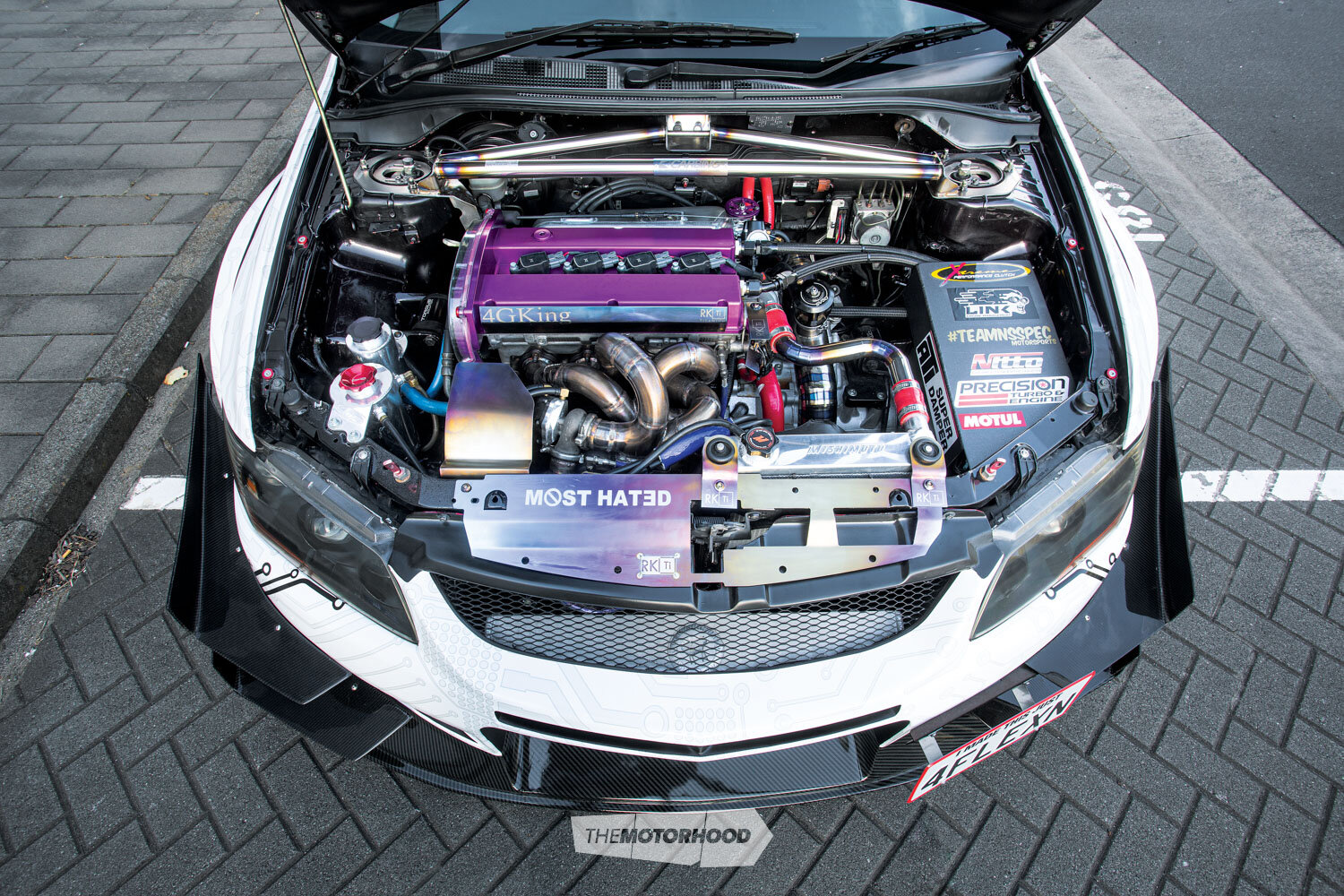
The head is a big-boost fanatic’s wet dream. A ported-and-polished casting houses Kelford 280/288-degree cams, a full Kelford valvetrain, and 1mm oversized Supertech valves just itching to be hit with 45psi of boost
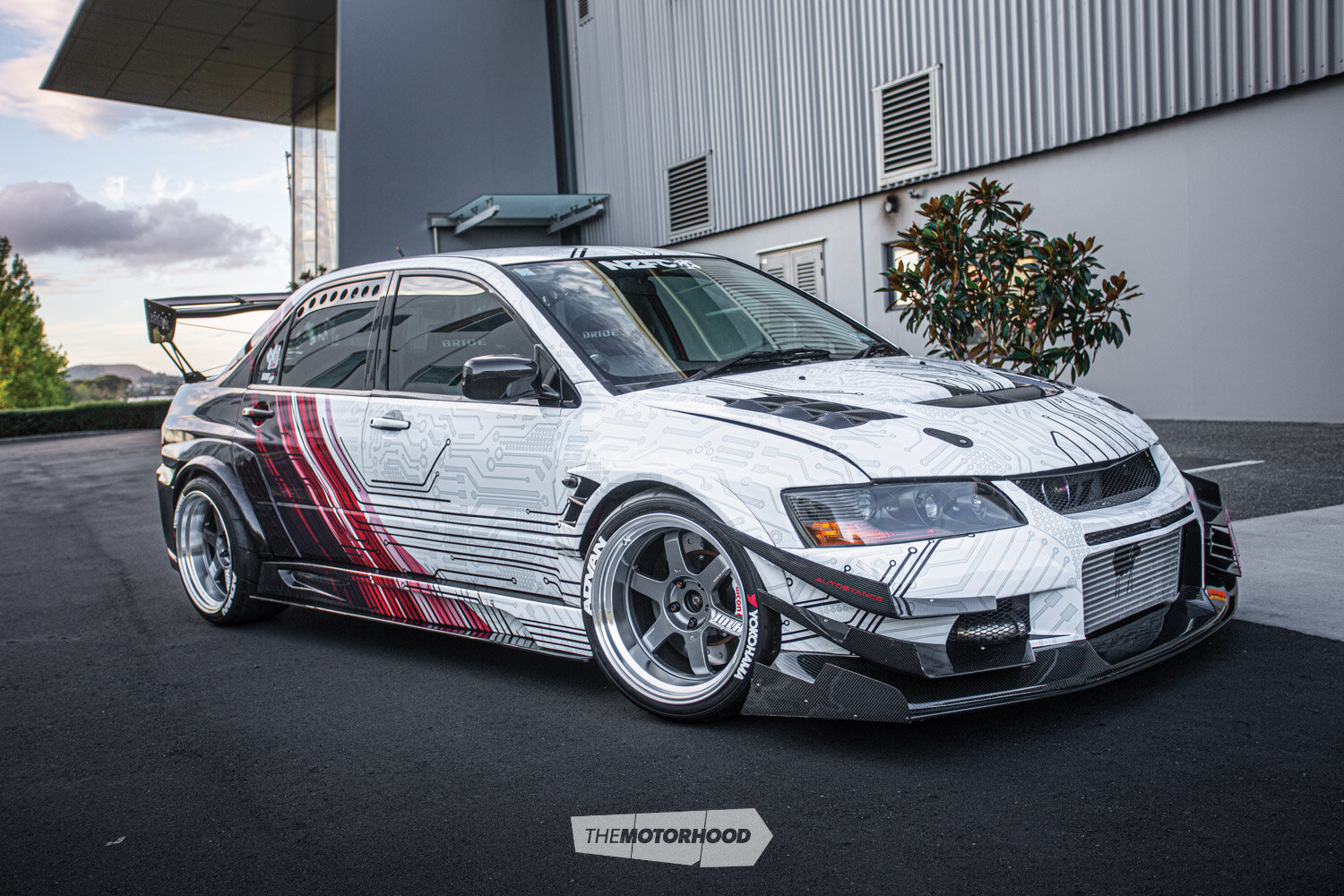
HEART
ENGINE: Mitsubishi 4G63, 2200cc, four-cylinder
BLOCK: Bored-and-honed Mitsubishi Evo VII casting, Nitto 2.2-litre stroker ENB40 billet crank, Nitto 153mm I-beam rods, CA625+ rod bolts, Nitto-spec 86mm JE forged pistons, ACL bearings, ATI Super Damper, Racefab extended-and-gated sump, Cosworth crank scraper, balance-shaft delete, HKS timing belt, Torque Solutions engine mounts
HEAD: Ported-and-polished Mitsubishi Evo VII casting, Supertech 1mm oversized intake valves, Supertech 1mm oversized exhaust valves, Supertech valve-stem seals, Kelford 280R camshafts, Kelford beehive valve springs, Kelford titanium retainers, AEM Tru-Time cam gears, ARP head studs, custom MLS head gasket, Hypertune billet rocker cover
INTAKE: Hypertune billet manifold, Hypertune billet throttle body
EXHAUST: Sheepey Built downpipe, custom exhaust
TURBO: Precision 6870, 1.15 rear housing, HP compressor cover, Sheepey Built front-facing manifold
WASTEGATE: Twin Go Fast Bits (GFB) 38mm wastegates
BOV: GFB 50mm
FUEL: Full Blown dual-pump hanger, twin Walbro 465 primary pumps, Bosch 2200cc injectors, Hypertune rail, GFB fuel-pressure regulator (FPR)
IGNITION: PRP R35 GTR coil-on-plug
ECU: Link G4
COOLING: Sheepey Built 120mm intercooler, RK Titanium three-inch intercooler piping, Mishimoto half-size radiator, RK Titanium upper radiator pipe
EXTRA: Tucked and partially de-loomed engine bay, relocated fuse box, RK Titanium custom anodized rocker cover, RK Titanium custom anodized heat shield, RK Titanium cam-sensor shield, RK Titanium radiator support brackets
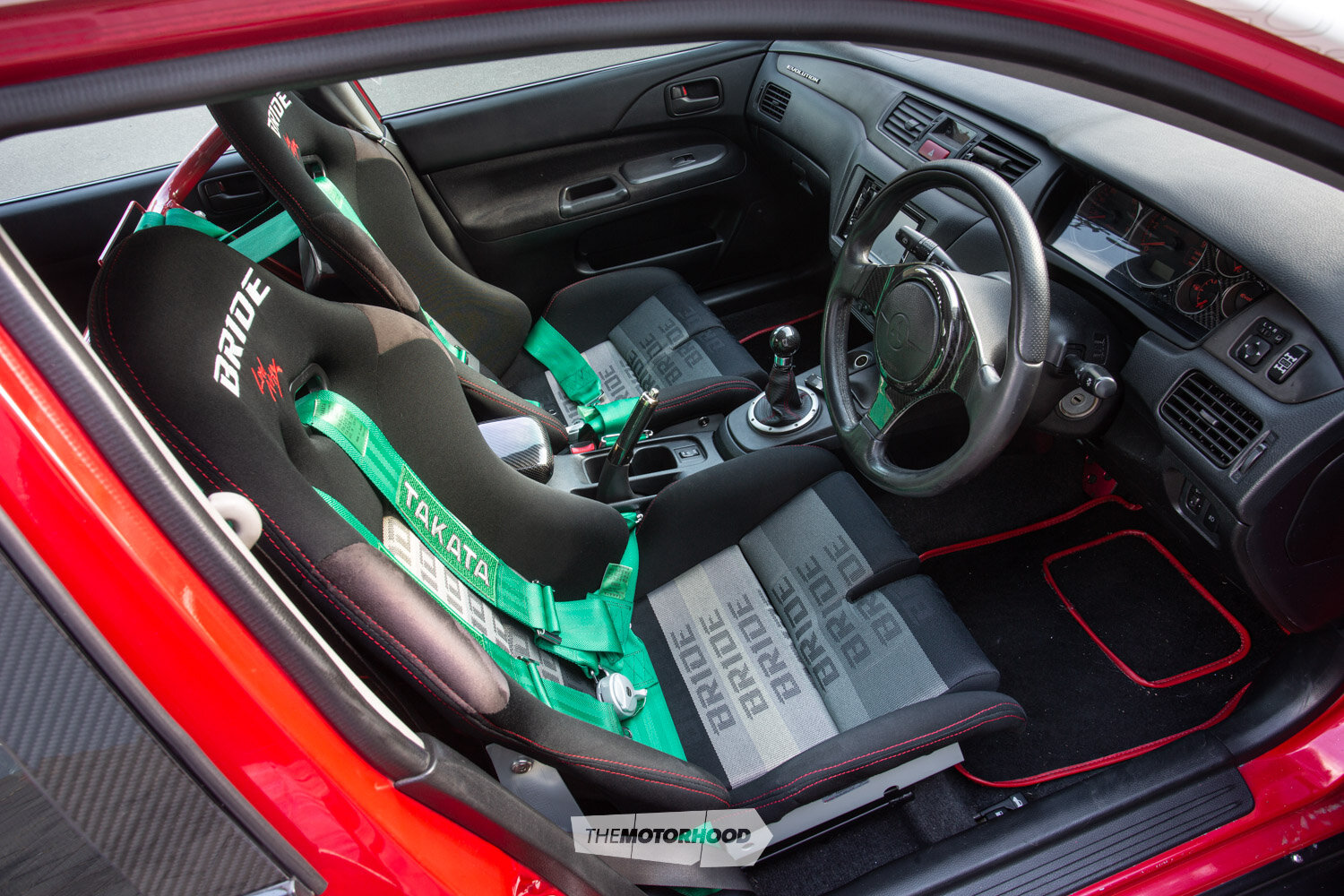
DRIVELINE
GEARBOX: Evo VII five-speed manual
CLUTCH: Xtreme triple-plate heavy-duty
FLYWHEEL: Xtreme lightened billet flywheel
DIFF: Factory
SUPPORT
STRUTS: BC Racing BR coilovers
BRAKES: (F) Alcon six-pot calipers, Alcon 365mm two-piece slotted rotors, Ferodo race pads; (R) Brembo rear calipers, DBA slotted rotors, Ferodo race pads, braided lines
EXTRA: Okuyama Carbing burnt-titanium front strut brace
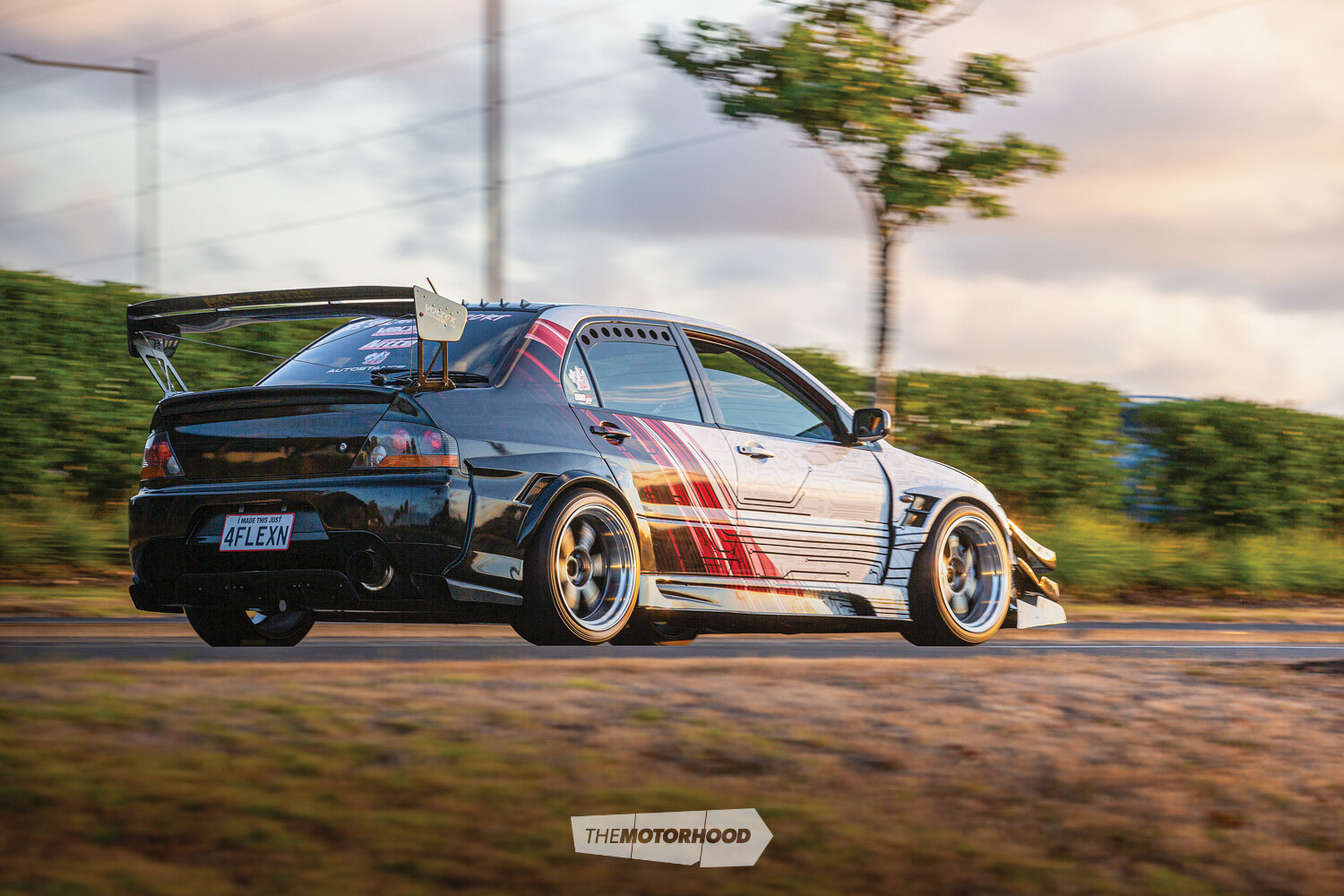
At the time, the Evo was running a C-West front bumper with Evo IX rear and sitting over a set of Rota Grids. Inspired by the aforementioned Time Attack examples from abroad, Shoneel wanted an aggressive aesthetic to match this new heart, adding a Voltex Cyber–edition widebody kit, swapping out the Grids for Enkei RPF1s to suit the new stance at the same time. The original red hue would eventually be replaced with a gloss liquid copper wrap, while the aero soon progressed to receive the extra-wide Voltex fender flares that are now installed over the widebody, paired with Type 2 carbon-fibre canards and side end plates on the front bumper. The side skirts were switched out for Varis examples that were modified to suit the Voltex wideness and given carbon-fibre underboards. A Voltex Type 5V carbon spoiler was a point of difference in a pool of generic GT wings and the RPF1s were eventually retired for a set of Rays TE37 SLs in Double Black.
It was this incarnation (‘MAGMAR’) that the car is likely better remembered for — doing the rounds at the big shows, collecting a gaggle of awards, and appearing at a few regular meets. It was cover car–level stuff back then, and, while we had been brewing it up to be exactly that, Shoneel knew there was even more to come, despite having drifted away from the forefront of the car scene due to work commitments. It’s a good thing that he did put the feature off, as the story was far from finished — what was evealed when the cover was pulled back for the big reveal at the 2020 4&Rotary Nationals is a whole new level up from what we’d seen of this car before.
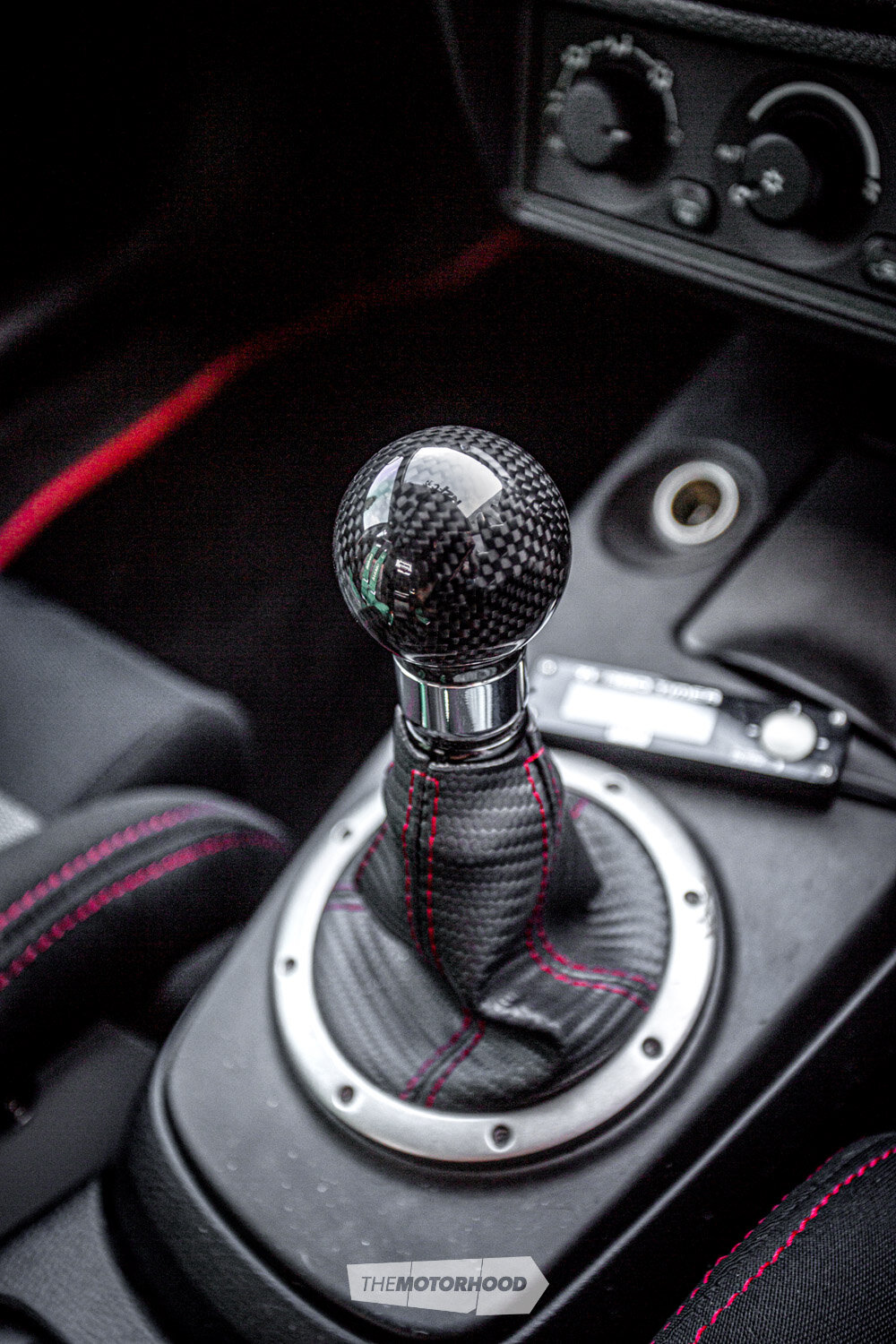
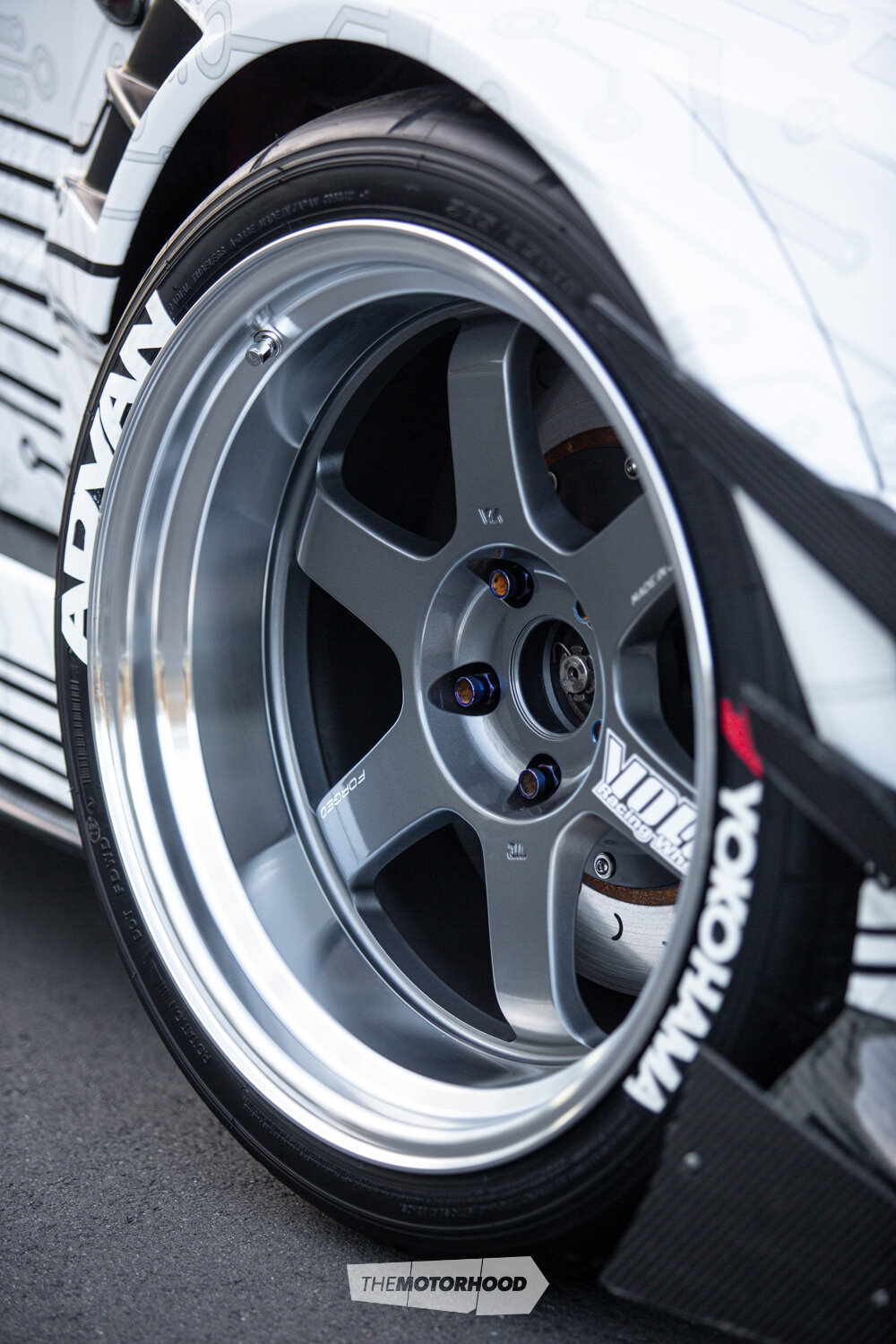
SHOES
WHEELS: 18×10.5-inch (-25) Rays Volk Racing TE37V Mark II
TYRES: 265/35R18 Yokohama Advan A048
Increasing capacity to 2.2-litre and cramming the head with max-flow componentry, the 4G63 currently cranks 470kW at all fours on 25psi running 98 octane, with an expected 650kW once some E85 and 20 extra psi can be thrown at it
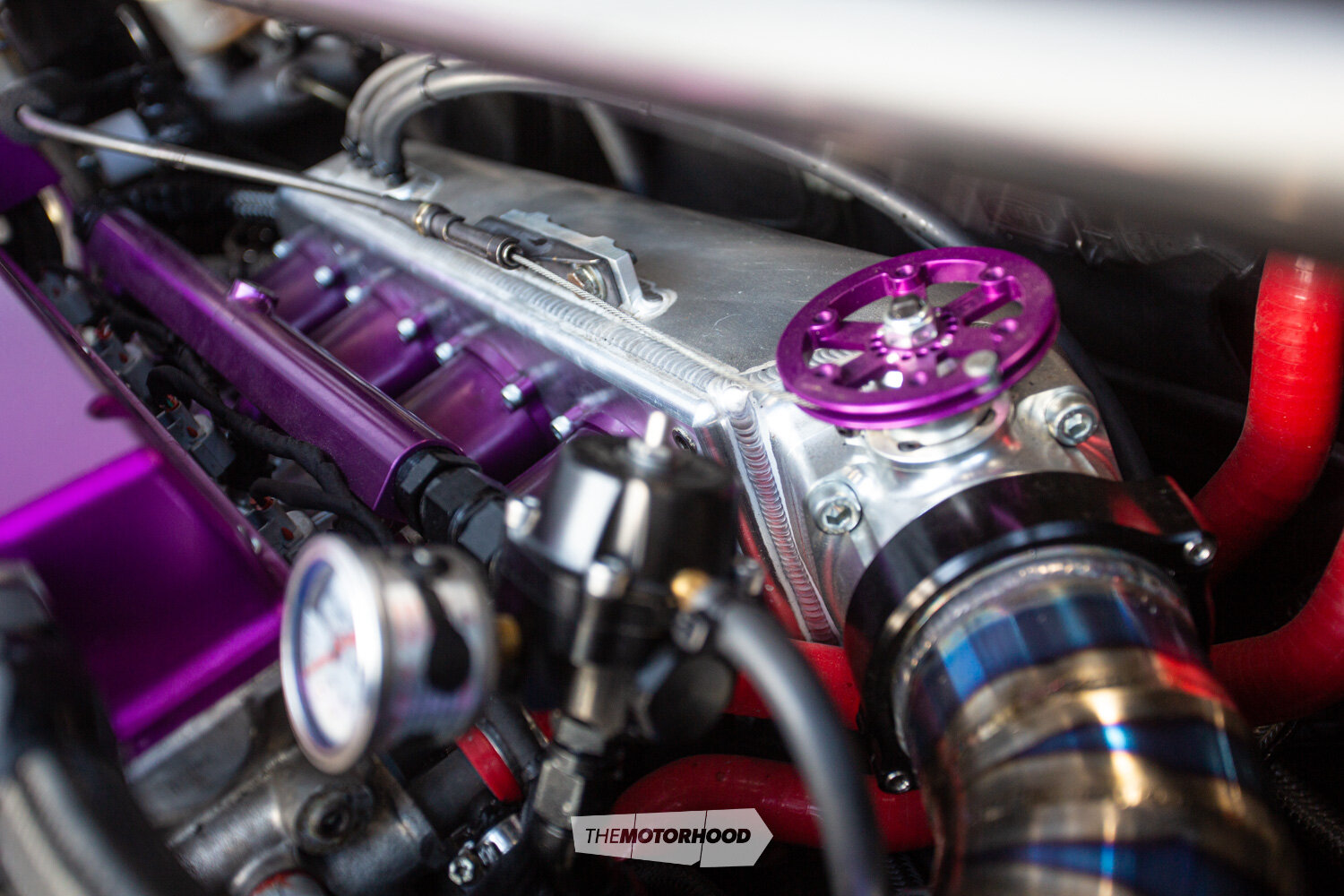
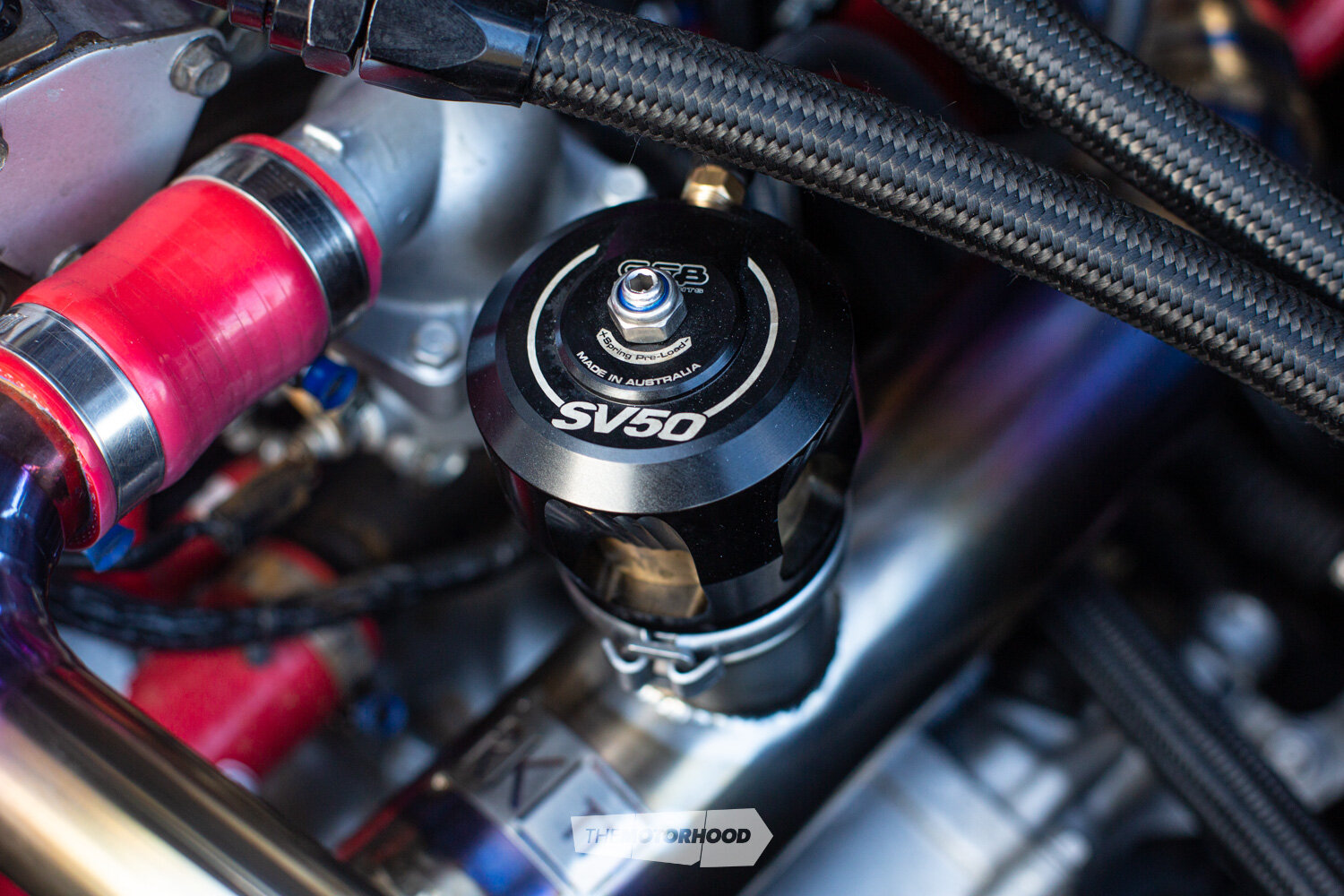
Feeling as though the Evo had become a bit stagnant, Shoneel stripped it down to its fundamentals to create a vision that was on par with what the big names overseas had been doing, setting himself the goal to creating one of the most complete and functional yet still street-driven Evo VIIs in the country. He’d already spent a ton of time perfecting the core exterior styling, so the Voltex pieces were retained and attention focused on the power plant. With the help of NS Spec Performance, the 2.3-stroker was ditched in favour of a Nitto 2.2-litre kit that makes use of a Nitto billet crank, I-beam rods, and Nitto-spec forged pistons. The reduced capacity allows for a much higher revving package — rated to bounce the needle off the 10,000rpm mark — thanks to the rod-to-stroke ratio. The fact that it retains most of the low-down torque that was enjoyed previously is just a bonus. This new package meant that a much bigger twin-scroll Precision 6870 snail, sitting atop a Sheepey Built front-facing turbo manifold, could be bolted on to maximize the power band.
The top end was brought up to spec by Speedfactor in Tauranga with a complete Kelford valvetrain that makes use of 280/288-degree camshafts. The valves are now 1mm oversize Supertech examples, and the casting itself has been ported in-house at Speedfactor. The team was also responsible for implementing a few tricky pieces such as the custom head gasket, O-rings, and half-inch head studs to prevent lift with high boost pressures. Ignition was switched out to an R35 GT-R coil-on-plug system, while the cold side has been treated to Hypertune goodness with a billet inlet manifold, fuel rail, and throttle body. The rail houses Bosch 2200cc injectors that are fed E85 via 10AN hard lines, connected to a Full Blown in-tank cradle housing twin Walbro 465s.
This thing is wide — really wide. Wearing a Voltex Cyber widebody, the car’s girth has been extended even more with Voltex extra-wide over-fenders that swallow up the 18×10.5-inch (-25) Rays Volk Racing TE37V Mark IIS
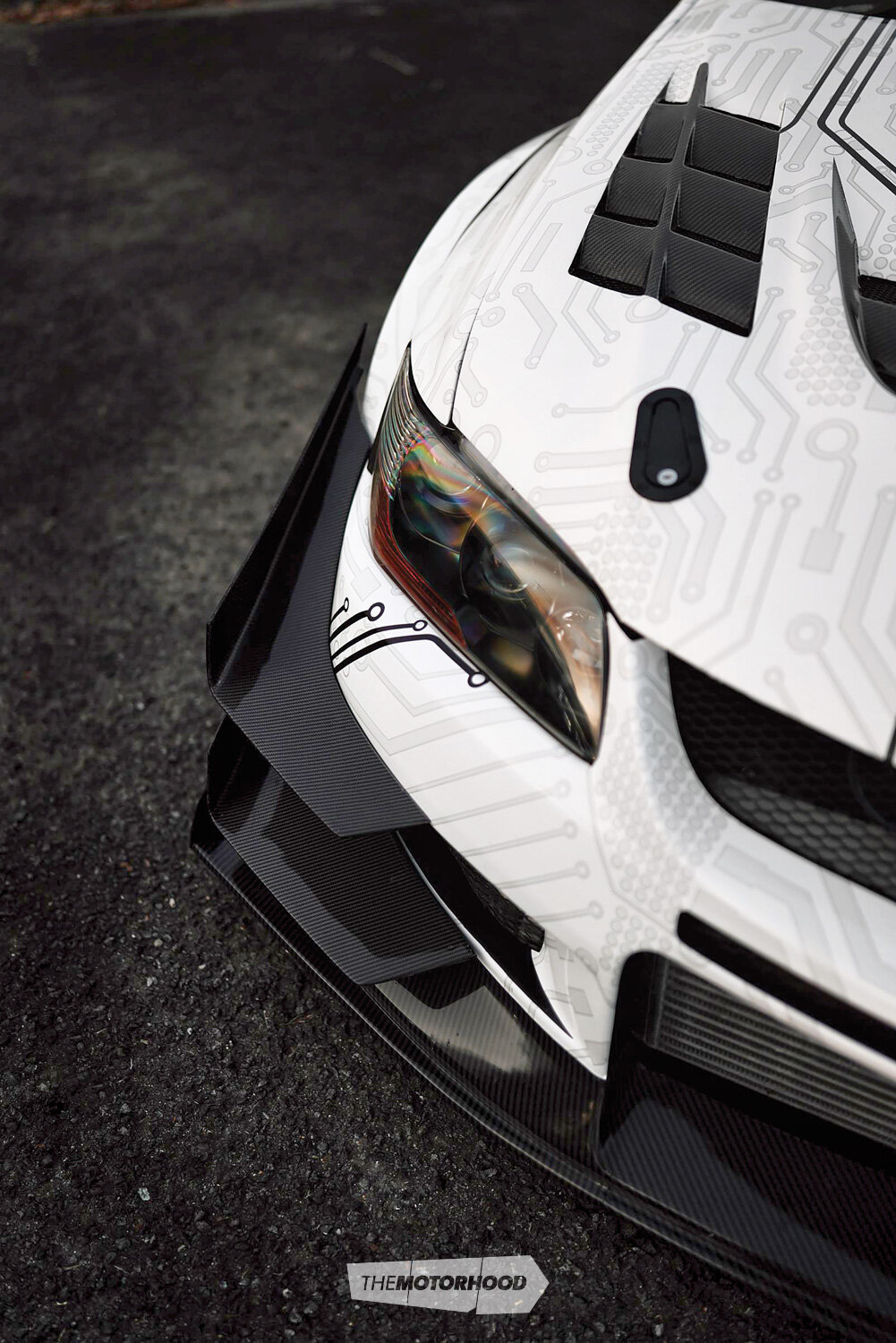
With a package of this level, there really aren’t enough hours in a day to rattle on about all the work that’s gone into it, and we haven’t even got to the Sheepey Built intercooler with RK Titanium piping everywhere, all the anodized fittings on every damn line, or all the small touches that work to tidy up the engine bay. All that needs to be said is that, come tune time, power increased to 470kW at all fours on 25psi running 98 octane, with plenty more left in it. The E85 tune is yet to come, but that figure is expected to rise to the 650kW mark on roughly 45psi!
With all that being chucked through the OEM five-speed box, an Xtreme triple-plate clutch has been paired with a lightened flywheel in preparation for the sequential gear-swapper that will eventually come once the stock unit gives up the ghost. Stopping power has also been given a serious amount of beefing up, with Alcon six-pot front calipers clamping 365mm two-piece slotted rotors. The rears remain the factory Brembo units with the addition of DBA slotted rotors.
Focus was finally turned to tying in a refreshed exterior, where Shoneel opted to take things right back to his early days of designing cars in a virtual garage, firing up the latest incarnation of Need for Speed, and toying around with a few different concepts. The result would be a printed wrap that went through multiple iterations to eventually become the hyper-digital design that pays homage to the Sierra Sierra and Cyber Evos. By now, the TE37SLs needed to be swapped out for something with more aggression to suit the look — Shoneel was able to secure the last set of 18×10.5-inch (-25) Rays TE37V Mark IIs available. These landed on our shores just one day out from Nats before quickly being wrapped in Yokohama Advan A048 rubber and bolted up to the hubs. With a bit more negative camber up front and slight modification to the widebody, it was the perfect fitment.
Designed in-game and applied in reality, the digitally printed wrap takes inspiration from the famous Cyber Evo and Sierra Sierra Evo that have influenced many other points on the car — it even claimed Best Graphics at the 2020 4&Rotary Nationals
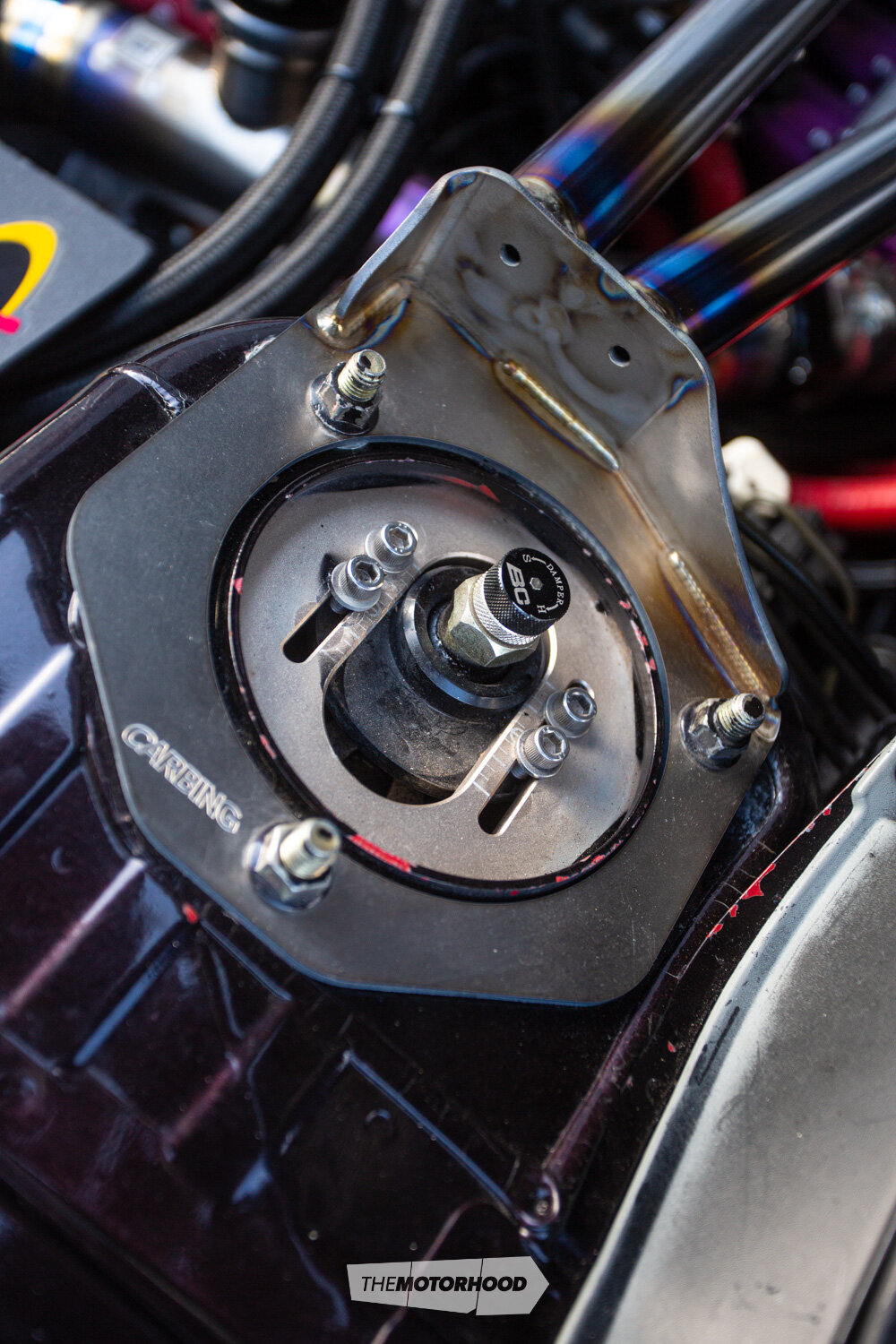
PERFORMANCE
POWER: 470kW
BOOST: 25psi
FUEL TYPE: 98 octane
TUNER: NS Spec
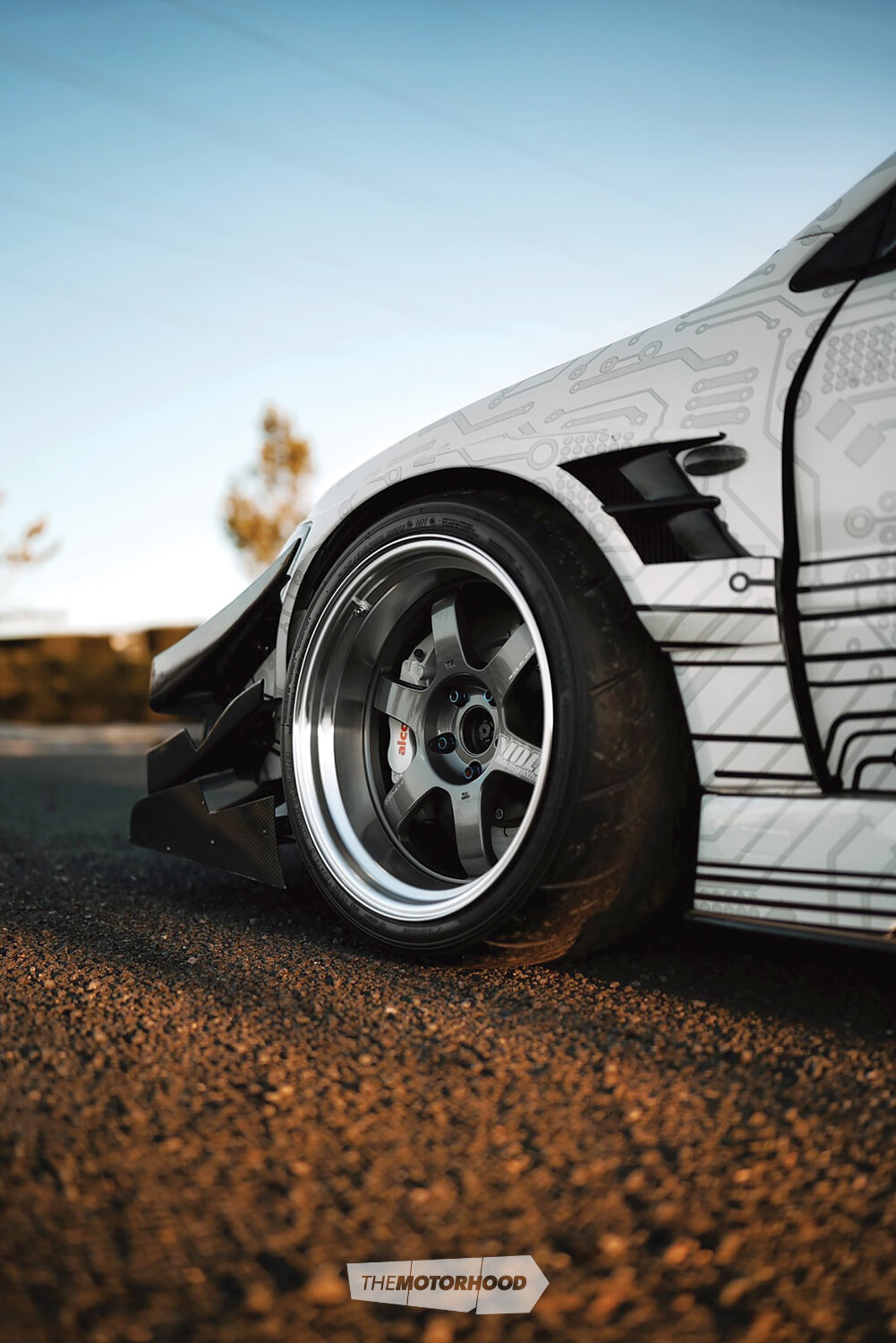
EXTERIOR
PAINT: Cyber Evo and Sierra Sierra Evo–inspired livery designed by Shoneel / Skepple Inc and applied by Visual Craft
ENHANCEMENTS: Voltex Cyber front bumper, Voltex widebody rear guards, OEM front guards with fender spacer mod, Voltex extra-wide front over-fenders, Varis side skirts, modified Varis underboards, Voltex-style carbon-fibre bonnet, aftermarket bonnet aero catch, Voltex Type 3 carbon-fibre canards, Voltex carbon-fibre end plates, Varis carbon-fibre rear diffuser, Varis carbon-fibre rear diffuser, Voltex Type 5V carbon-fibre spoiler with cross bracing, carbon-fibre lip spoiler, Rexpeed carbon-fibre side-mirror covers, Rexpeed carbon-fibre B-pillar covers, Rexpeed carbon-fibre window vents, Vortex generator, custom retrofit headlights, True Quad projector system with high-intensity discharge (HID) ballasts, Quad RGB Demon Eye system, Bluetooth light controller
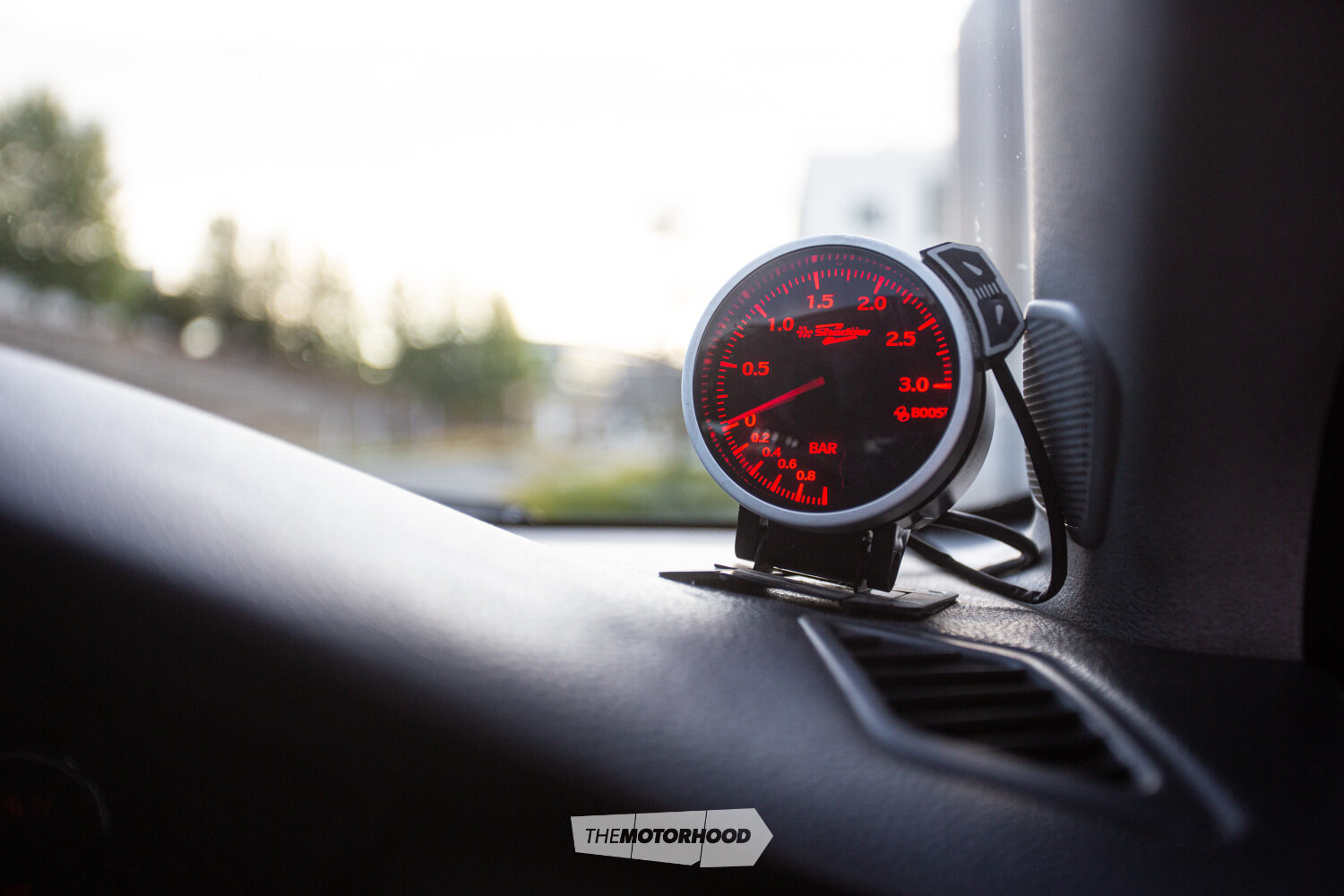
INTERIOR
SEATS: Bride, Takata four-point harnesses
STEERING WHEEL: Factory
INSTRUMENTATION: Factory
EXTRA: Rexpeed carbon-fibre cluster surround, Rexpeed carbon-fibre steering wheel cover, Rexpeed carbon-fibre centre console cover, Varis carbon-fibre gear knob, custom shifter boot, harness bar
For his efforts, Shoneel walked away with Best Suspension/Brakes; Best Wheels; Best Bodykit; and, more important, Best Graphics in the Tough Street Class — adding these to the many awards the car has already claimed throughout its various incarnations in the past. With a full interior rework and a few finishing touches on the outside still to come, Shoneel tells us it’s still not 100 per cent finished, but is anyone’s car ever actually ‘finished’?
Unlike all that well-spent time as a youth, these days, Shoneel doesn’t need to fire up the PlayStation when he wants to turn a wheel in anger. He’s stepped out of the virtual realm and traded in the controller for a steering wheel based firmly in reality.
DRIVER PROFILE
DRIVER/OWNER: Shoneel Ram
AGE: 31
LOCATION: Auckland
OCCUPATION: Dental Prosthetist
BUILD TIME: 1 year
LENGTH OF OWNERSHIP: 6 years
THANKS: John and Toufiq (Pops) at NS Spec Motorsports, everyone from NZFC, Skepple and Tommie from Visual Craft, Rob from RK Titanium, My family and friends for putting up with my madness
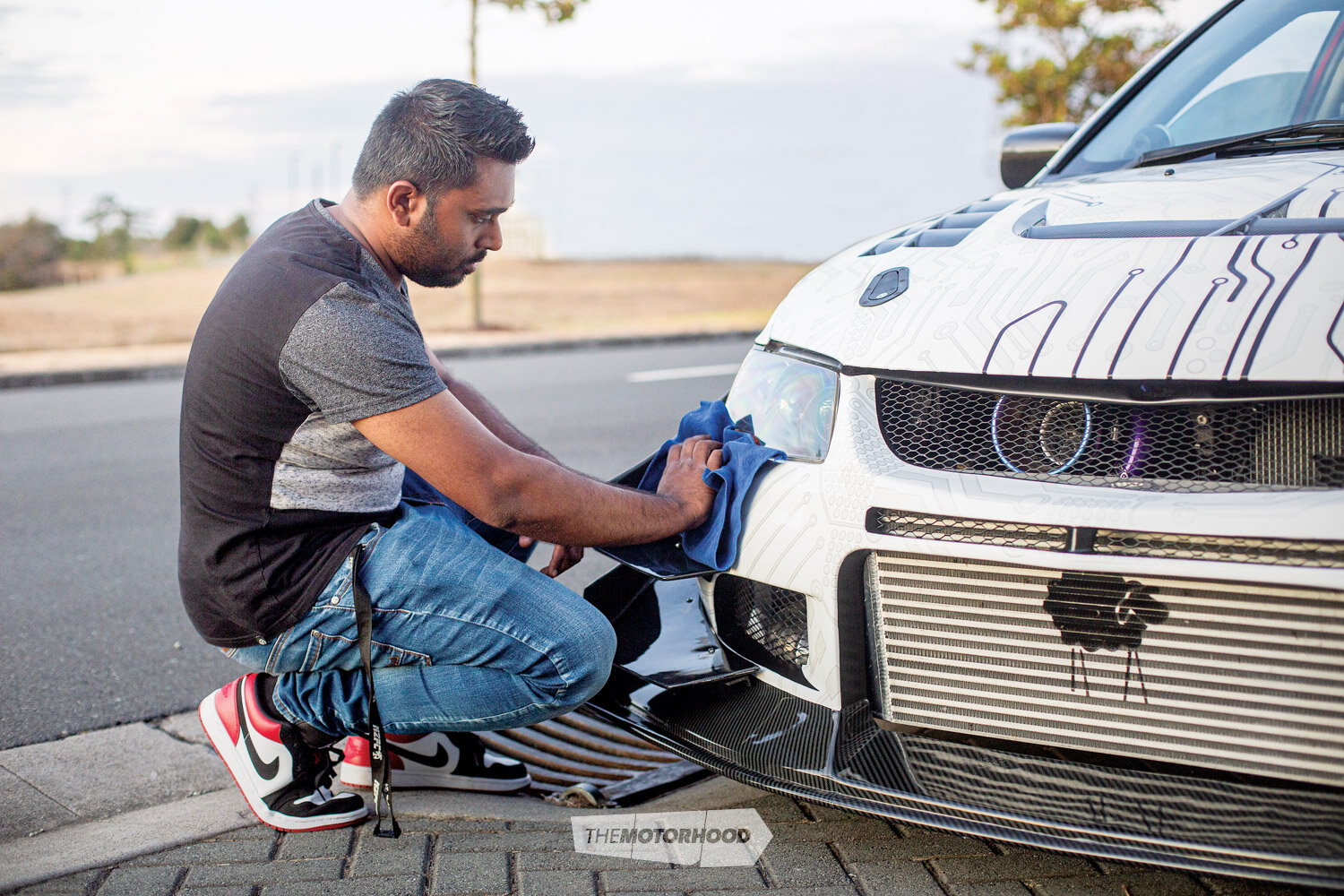
This article originally appeared in NZ Performance Car issue No. 280





